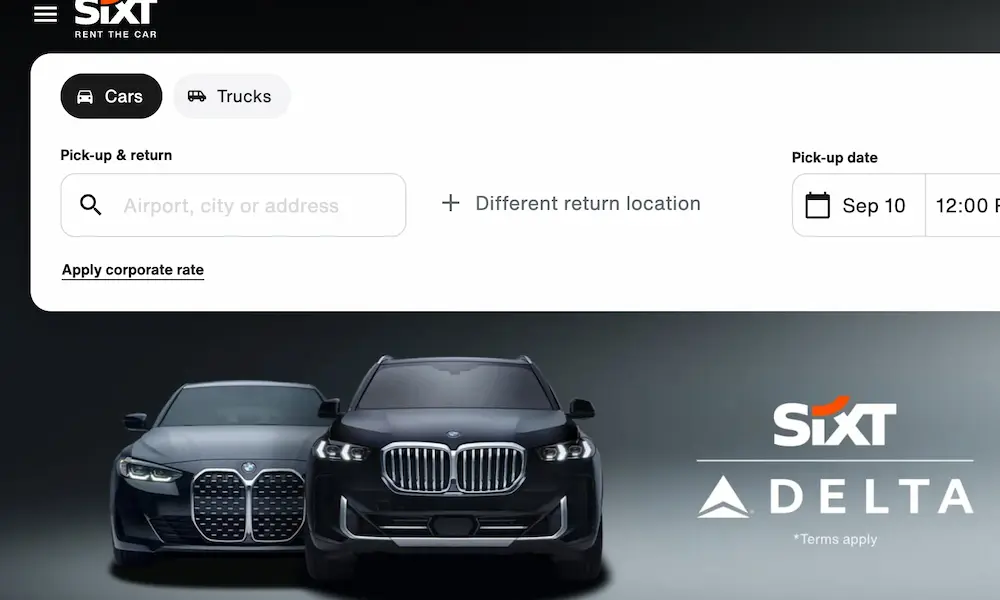Navigating toll roads in California with a rental car can be simple once you understand the process. Most rental companies offer various payment options, ensuring that toll fees are taken care of seamlessly during your trip.
Whether it’s using a rental car’s electronic transponder or adding the vehicle to your existing FasTrak account, you can drive through the Golden State without worrying about toll booths or missed payments.
Understanding Toll Roads in California
When you’re driving in California, you’ll encounter various toll roads that use different payment methods. It’s important to know how these work, especially if you’re in a rental car.
Types of Toll Roads
California’s toll road network includes express lanes, traditional toll roads, and several toll bridges. Express lanes, which are optional traffic lanes on freeways that you can use to bypass congestion for a fee, often operate on a variable pricing system based on current traffic conditions. On the other hand, toll bridges have a fixed toll fee, like the iconic Golden Gate Bridge.
- Express Lanes: Price varies with congestion
- Toll Roads: Fixed fee
- Toll Bridges: Fixed fee, e.g., Golden Gate Bridge
Payment Methods
For toll payment, California mainly uses an electronic system known as FasTrak. When you pass through a toll, license plate recognition technology is used to record your trip if you don’t have a FasTrak transponder. You can also pay with cash at some toll booths, but many are moving towards cashless operations.
- FasTrak: Prepaid account linked to a transponder or license plate
- License Plate Recognition: Post-pay via bill to registered vehicle owner
- Cash: Limited availability; many tolls are now cashless
If you’re in a rental car, make sure to ask your rental company how they handle tolls since you may be responsible for additional charges if you drive on California’s toll roads and bridges.
The Role of Rental Car Companies
When you rent a vehicle in California, it’s essential to understand that rental car companies play a crucial role in how tolls are processed and paid. They establish the terms and manage the policies that govern toll payments, which can include additional charges beyond the actual toll fees.
Rental Agreement Terms
Your rental agreement contains specific terms related to toll payment, which you agree to upon signing. This document will detail how tolls are recorded and billed, as well as any convenience fees the rental company may assess for toll management on your behalf. Reviewing the rental agreement thoroughly can help you avoid unexpected charges and ensure that your privacy is protected.
Common Rental Car Toll Policies
- PlatePass: Some companies, like Dollar and Thrifty, offer an all-inclusive toll program called PlatePass. You may opt into this service for a daily fee, which covers all tolls.
- Convenience Fee: If not enrolled in a toll program, each time you pass through a toll without paying, you could incur a fee. The specific fee can vary but may start around $3.95 per day of electronic toll use with a cap for the rental period. Some areas, like Chicago, might have higher fees.
- Administrative Fee: Driving through cashless tolls without prior arrangements can result in an administrative charge. This charge can be up to $15 per toll, with a cap that could reach $90.
- Payment Options: Companies such as The Toll Roads have customer service numbers you can call, like Enterprise at 877-860-1258 or National at 877-860-1283, for assistance with toll payments and questions about convenience fees.
Always check with the rental company for the most up-to-date and location-specific policies on toll payments to avoid surprises on your bill.
Setting Up Payment for Tolls
When driving a rental car in California, you’ll encounter toll roads that require you to pay for passage. It’s essential to set up payment in advance to avoid any fines or administrative fees. Here’s how you can take care of toll payments seamlessly.
Using FasTrak with Rental Cars
If your rental car is equipped with a FasTrak transponder, you can use it to automatically pay tolls. To do this, you’ll need to pre-register the transponder with your credit card or debit card. Some rental companies might allow you to use their account, and fees will be charged to the card you used for the rental.
Paying Tolls Without a FasTrak Account
Don’t worry if you don’t have a FasTrak account; you can still pay tolls by setting up a one-time payment. You can do this before or within five days after using the toll road. All you need is your rental car’s license plate number and a debit or credit card for electronic payments.
Third-Party Toll Payment Options
There are third-party services that can manage your toll payments when using a rental vehicle. Ensure you ask your rental company about their preferred provider and understand any additional fees. Services such as PlatePass and the Highway Toll Administration simplify paying tolls and directly bill your credit card for tolls incurred.
Additional Charges and Fees
When renting a car in California, it’s essential to be aware of possible additional costs associated with toll roads, including service fees and convenience charges. These extra expenses can add up, so keeping them in mind when planning your budget is helpful.
Service Fees and Convenience Charges
Most rental car companies offer a toll payment service that automatically takes care of toll charges during your rental period. However, these services often come with a service fee or convenience charge in addition to the actual tolls. For instance, a company like Silvercar stands out for not imposing convenience charges, while others may charge a daily rate of up to $3.95 with a monthly maximum. If you’re looking for more budget-friendly options, Avis and Budget might be less burdensome on your wallet regarding these extra charges.
Violations and Fines
If you decide not to opt in for the rental company’s toll service, be extremely cautious about passing through tolls without paying at the time of use. Missed toll payments can attract hefty fines, with rental companies potentially charging an administrative fee for each unpaid toll. For example, Dollar and Thrifty may charge you a steep fee for each unpaid toll, and these costs can quickly escalate to a limit of $90. Always double-check to ensure that your tolls are paid, or opt into the service provided by the rental company to avoid these incidental costs.
Regional Considerations for Toll Roads
When you’re driving a rental car, the approach to handling tolls can vary significantly by region. It’s essential to know the specific rules and payment methods for each area you travel through to avoid unexpected fees or fines.
Tolls in Different States and Countries
United States: Toll road systems can differ from state to state. For example, while the Golden Gate Bridge in California has gone all-electronic for toll collection, meaning you won’t be able to pay with cash at the toll booth, other states may still accept cash payments. In Florida and Texas, you might encounter cashless toll roads where you have to pay online or through a toll authority, potentially leading to additional charges if the rental service pays these for you.
International: If you’re visiting from another country like Canada or Puerto Rico, familiarize yourself with the United States toll roads as your home country’s toll tags likely won’t work. Each state’s toll system can be unique, and you should contact your rental agency to understand their process for tolls in your destination.
Special Considerations for California
California: When it comes to California’s toll roads, you’ll find different systems within the state itself. For instance, the 73, 133, 241, and 261 Toll Roads in Orange County have their specific way of handling tolls, and they are not interchangeable with other toll facilities like the I-15 Express Lanes or the 680 Express Lanes.
Consider this:
- In the Orange County area, registering your rental car with The Toll Roads is necessary to cover the tolls on the 73, 133, 241, and 261 Toll Roads.
- Outside of these specific roads, other methods of payment might be required. The I-15 Express Lanes, for example, will not accept payment methods intended for the roads mentioned above.
- Always check directly with your rental car provider for the latest and most accurate toll payment information to avoid convenience fees on top of your regular toll charges.
Tips for Driving a Rental Car on California’s Toll Roads
Navigating toll roads in California with a rental car doesn’t have to be complicated. Knowing the steps to take before, during, and after your trip can help ensure you avoid unnecessary fees and have a smooth driving experience.
Before You Drive
Know Your Rental Agreement: Familiarize yourself with the toll policy detailed in your rental agreement. Determine if your rental company has a toll program such as PlatePass and the associated daily fee. Confirm the charges for tolls if you don’t opt for the program, including any administrative fees for unpaid tolls.
Contact Your Rental Company: Get in touch with customer service for clarification on toll handling. For example, you can call Enterprise at 877-860-1258 or National at 877-860-1283 to inquire about convenience fees and payment options for using toll roads.
During Your Trip
Drive Carefully and Plan Ahead: While on the road, be vigilant of cashless toll signs. Plan your route in advance and be aware of where toll roads appear on your journey through California.
Use Toll Apps or Pay Online: If you’ve not enrolled in your rental’s toll program, you can still pay tolls within five days before or after using the The Toll Roads app or at TheTollRoads.com.
After Your Journey
Review Your Charges: Once your rental period is completed, review the final billing statement to ensure all tolls are correctly charged. If you went through a cashless toll, confirm no additional fees are added if you’ve paid the tolls via alternate methods.
Follow Up If Necessary: If you find discrepancies or unexpected toll-related charges on your bill, reach out promptly to your rental car company’s customer service. It’s your responsibility to clear up any charges before they become overdue.
Conclusion
When traveling with a rental car in California, it’s important to understand how to handle toll payments. Your rental car company usually offers convenient options for toll payments, which you can inquire about when booking your vehicle. However, if you prefer handling tolls independently, FasTrak and The Toll Roads offer platforms to pay online or via their apps. Remember to settle tolls promptly to avoid additional fees. Safe travels!















